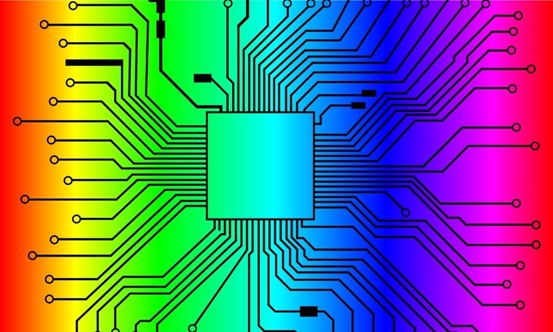EPJ B Highlight - Investigating newly synthesised thallium compounds for optoelectronic devices
- Details
- Published on 01 April 2022

The burgeoning field of optoelectronic devices is driving the development of new alkali metal-based chalcogenides with qualities that have to be robustly investigated.
The need for efficient optoelectronic devices is growing and hand-in-hand so too is the challenge of discovering new semiconductors with valuable properties. This has spurred significant research in the synthesis and characterization of new alkali metal-based (AM) chalcogenides involving copper, silver and alkali metal with valuable properties like flexibility, high thermal stability, semiconductivity, photovoltaic effects.
Inspired by the growing demand for new optimum semiconducting materials, a new paper published in EPJ B authored by Abdelmadjid Bouhemadou, Laboratory for Developing New Materials and their Characterizations, Department of Physics, Faculty of Science, University of Ferhat Abbas Setif, Algeria and his co-authors, investigated in detail the structural, elastic, electronic and optical properties of two newly synthesized compounds, namely Tl2CdGeSe4 and Tl2CdSnSe4.
In the paper, the authors describe concerns with AM-based chalcogenides which hinder technological applications, adding that these disadvantages could be overcome by compounds that integrate thallium (Tl) including Tl2CdGeSe4 and Tl2CdSnSe4.
The researchers explain that Tl is much less electropositive than alkali metals; the electronegativity of Tl is much higher than that of any alkali metal. This leads to a less ionic character in Tl-based compounds, which may lead to low electrical resistivities and therefore to higher carrier mobilities.
Tl is also heavier than any stable alkali metal, which means it has low lattice thermal conductivity improving physical properties requiring low lattice thermal conductivity such as thermoelectric efficiency. Tl-containing materials also tend to be less sensitive to air and moisture than AM-based compounds. These and other advantages mean that significant research has been devoted to the exploration of Tl-based chalcogenides.
The authors of the paper say that their research revealed that the studied materials exhibit a high absorption in an energy window involving the visible spectrum. In addition to this, the optimized structural parameters of Tl2CdGeSe4 and Tl2CdSnSe4 are in excellent agreement with the experimental counterparts, confirming the reliability of the theoretical method used to predict the physical properties of the title compounds.
This revealed that the studied compounds are soft, ductile, mechanically stable and substantially structurally and elastically anisotropic materials.
Karkour, S., Bouhemadou, A., Allali, D. et al. Structural, elastic, electronic and optical properties of the newly synthesized selenides Tl2CdXSe4 (X = Ge, Sn), European Physical Journal B 95:38, https://doi.org/10.1140/epjb/s10051-022-00288-y





